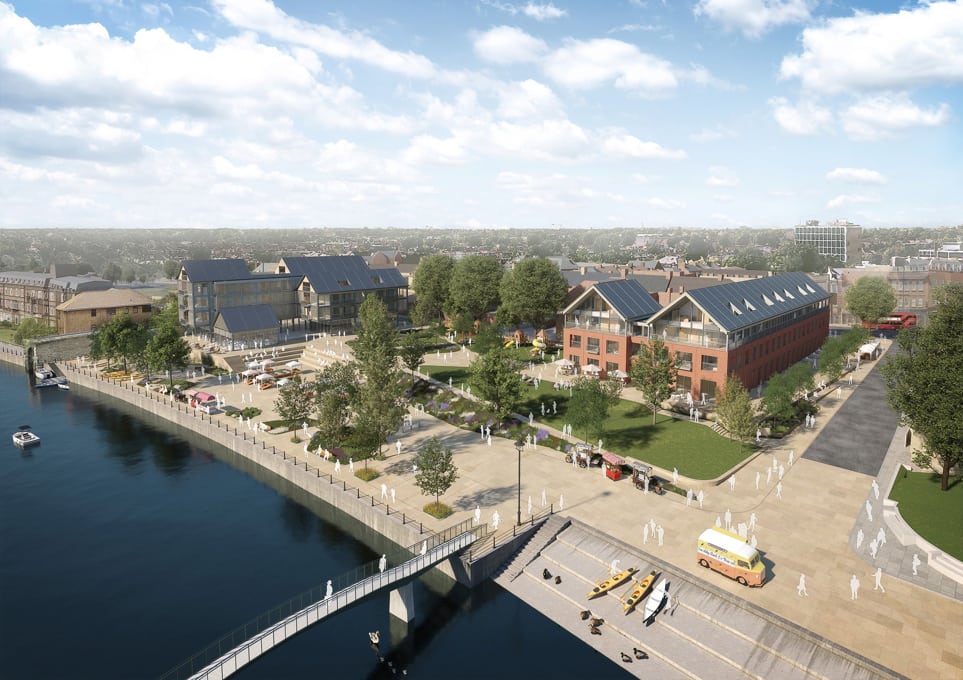Change of Use Planning in Richmond West Twickenham: Rules, Tips & Success Stories
Understanding Change of Use in Richmond West Twickenham
Richmond West Twickenham is a thriving and sought-after area in southwest London, known for its charming riverside views, historic architecture, and vibrant local economy. As the demand for residential and commercial spaces evolves, property owners and developers often seek to change the use of their buildings to better align with market needs. Whether you are a business owner looking to convert a retail shop into a café or a homeowner planning to transform an office into a residential dwelling, understanding the Change of Use regulations is crucial.
What is Change of Use?
Change of Use refers to altering the purpose of a building or land from one planning classification to another. In the UK, these classifications are set out in the Town and Country Planning (Use Classes) Order 1987, which has been updated over the years. Certain changes can be made without planning permission under Permitted Development Rights (PDR), while others require formal approval from Richmond Council.
Key Change of Use Categories
1. Commercial to Residential (Class E to C3)
One of the most common Change of Use applications in Richmond’s West Twickenham involves converting commercial properties into residential units. Given the high demand for housing in London, this change can be a lucrative opportunity for property owners. However, factors such as adequate natural light, space standards, and noise impact assessments must be considered.
2. Office to Residential (B1 to C3)
Since the introduction of Permitted Development Rights, many offices have been converted into residential flats. In areas like Richmond and Twickenham, where office demand has shifted post-pandemic, these conversions help meet the growing need for housing.
3. Retail to Restaurant or Café (Class E to Sui Generis)
Many high streets in Richmond and Twickenham are adapting to changing consumer behavior, leading to an increase in applications for changing retail shops into restaurants, cafés, or takeaways. However, this requires careful consideration of noise, ventilation, waste disposal, and potential objections from neighboring businesses or residents.
4. Industrial to Residential (B2 to C3)
In some cases, old warehouses or light industrial units are being transformed into stylish residential lofts or co-living spaces. This type of conversion usually requires detailed planning permission and environmental assessments to ensure that former industrial activities do not pose any health risks.
5. Change of Use for Short-Term Lets (C3 to Sui Generis)
With the rise of platforms like Airbnb, many landlords in Richmond West Twickenham are seeking to convert traditional long-term rentals into short-term holiday lets. However, local councils are increasingly scrutinizing these conversions due to concerns about community impact, noise, and housing shortages.
Planning Permission vs. Permitted Development
Certain Change of Use conversions fall under Permitted Development (PD), allowing property owners to proceed without full planning permission. However, prior approval from Richmond Council may still be required, particularly in conservation areas or when external alterations are involved. It’s essential to check whether your proposed change falls within PD or requires a formal planning application.
Key Considerations for Change of Use in Richmond West Twickenham
- Local Planning Policies: Richmond Council has specific guidelines on Change of Use applications, particularly in conservation areas where strict regulations apply.
- Impact on Community & Infrastructure: Traffic, parking, and noise impact assessments may be necessary, especially for commercial-to-residential conversions.
- Building Regulations Compliance: Even if planning permission is granted, changes must comply with fire safety, accessibility, and energy efficiency standards.
- Heritage & Conservation Considerations: Many buildings in Richmond and Twickenham are listed or fall within protected areas, requiring additional approvals for modifications.
- Environmental & Sustainability Factors: Sustainable development is a priority, and changes must align with Richmond’s green initiatives and energy efficiency targets.
How to Apply for a Change of Use in Richmond West Twickenham
If your proposed Change of Use requires planning permission, follow these steps:
- Conduct Pre-Application Research: Review Richmond Council’s planning policies and guidelines to assess feasibility.
- Prepare Necessary Documentation: Submit architectural drawings, environmental reports, and supporting statements.
- Consult with a Planning Consultant: Seeking professional advice can help streamline the application process and improve approval chances.
- Submit a Planning Application: Apply via the Planning Portal or directly through Richmond Council.
- Await Decision & Address Concerns: The council will review your application, consider objections, and may request modifications before granting approval.
Conclusion
Changing the use of a property in Richmond West Twickenham can be a strategic move to maximize property value and adapt to market demands. However, navigating the complex planning system requires a solid understanding of local regulations, potential challenges, and compliance requirements. Whether you are an investor, developer, or homeowner, working with planning experts and staying informed about Richmond Council’s policies will ensure a smoother and more successful Change of Use process.



No responses yet